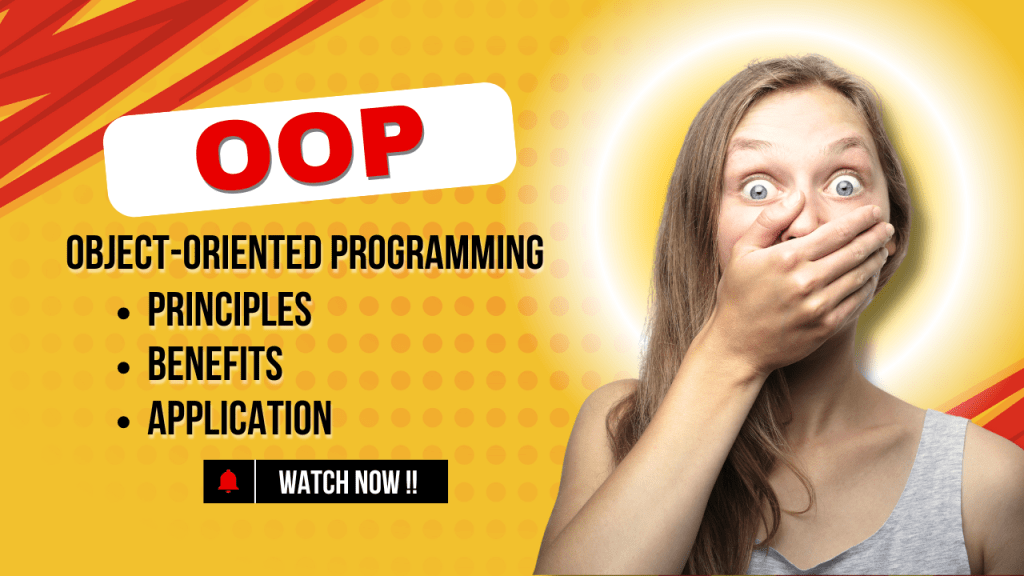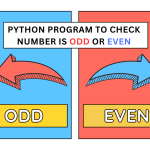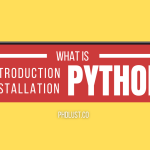Introduction to OOP
Object-Oriented Programming, commonly known as OOP, is a programming paradigm cantered around the concept of “objects.” These objects can represent real-world entities like a car, a person, or even a bank account, and they encapsulate both data (attributes) and behaviours (methods). But what exactly makes OOP so important in modern programming?
Importance of OOP in Modern Programming
OOP is widely used because it provides a clear modular structure for programs, making it easier to manage and maintain code. By organizing software into objects that interact with one another, OOP encourages code reusability, scalability, and efficiency. Whether you’re building a simple application or a complex system, understanding OOP is crucial.
The Four Pillars of OOP
At the core of OOP are four fundamental concepts: Encapsulation, Inheritance, Polymorphism, and Abstraction. These principles define how objects interact within a program and provide the foundation for building robust, flexible software.
Encapsulation
Encapsulation is the process of bundling data and methods that operate on that data within a single unit, typically a class. This concept allows you to hide the internal state of an object from the outside world, exposing only what is necessary. It’s like a car—when you drive, you don’t need to know how the engine works, just how to operate the controls.
Inheritance
Inheritance allows a new class (child class) to inherit properties and behaviours from an existing class (parent class). This mechanism promotes code reuse and helps to establish a hierarchical relationship between classes. Think of it as passing down traits from parents to children in the biological world.
Polymorphism
Polymorphism, meaning “many forms,” allows objects to be treated as instances of their parent class while enabling methods to be overridden in child classes to provide specific behaviour. This flexibility is akin to how a single word can have multiple meanings depending on the context.
Abstraction
Abstraction involves hiding complex implementation details and exposing only the essential features of an object. It simplifies interaction by focusing on what an object does rather than how it does it. Imagine using a TV remote—you only see the buttons, not the complex circuitry inside.
Understanding Classes and Objects
What is a Class?
A class is a blueprint for creating objects. It defines the attributes and methods that the objects created from the class will have. For instance, a “Car” class might have attributes like color, model, and speed, along with methods like accelerate and brake.
What is an Object?
An object is an instance of a class. If “Car” is the class, then a specific car like “Honda Civic” would be an object of that class. Objects can have different values for their attributes but share the same structure defined by their class.
Real-world Examples of Classes and Objects
Consider a class called “Book.” This class might have attributes like title, author, and genre, and methods like open, read, and close. A specific book, such as “Harry Potter,” would be an object of the “Book” class.
Encapsulation: The Concept of Bundling Data
How Encapsulation Works
In OOP, encapsulation involves bundling the data (attributes) and methods (functions) that operate on the data into a single class. This practice restricts direct access to some of an object’s components, which can prevent unintended interference and misuse.
Benefits of Encapsulation
Encapsulation offers several benefits:
- Improved Data Security: By hiding the internal state of an object, encapsulation protects data from unintended or malicious modifications.
- Enhanced Code Maintainability: Encapsulation keeps code organized and modular, making it easier to maintain and update.
Inheritance: Reusing Code Effectively
Understanding Parent and Child Classes
Inheritance allows a child class to inherit attributes and methods from a parent class. For example, if you have a parent class called “Vehicle,” a child class like “Car” can inherit the properties of “Vehicle” while adding its unique features.
Examples of Inheritance in Programming
Consider a “Vehicle” class with attributes like wheels and speed. A “Bicycle” class can inherit these attributes while adding specific methods like pedal.
Advantages of Inheritance
Inheritance promotes code reuse, reduces redundancy, and establishes clear relationships between classes, making your code more efficient and easier to understand.
Polymorphism: Flexibility in Programming
What is Polymorphism?
Polymorphism allows objects to be treated as instances of their parent class, with methods that can be overridden to provide specific behaviors in child classes. This concept allows for more flexible and dynamic code.
Types of Polymorphism: Compile-time vs. Run-time
- Compile-time Polymorphism: Achieved through method overloading or operator overloading, where multiple methods can share the same name but differ in parameters.
- Run-time Polymorphism: Achieved through method overriding, where a child class provides a specific implementation of a method already defined in its parent class.
Practical Applications of Polymorphism
Polymorphism is widely used in scenarios where code needs to be flexible and adaptable, such as in the design of graphical user interfaces or the implementation of complex algorithms.
Abstraction: Simplifying Complex Systems
The Role of Abstraction in OOP
Abstraction focuses on simplifying complex systems by hiding unnecessary details and exposing only what is necessary. This makes it easier to interact with objects without needing to understand their internal workings.
Examples of Abstraction in Real-world Scenarios
Consider an ATM machine. The user interacts with a simple interface (insert card, enter PIN) without needing to understand the intricate processes happening inside the machine.
OOP vs. Procedural Programming
Key Differences Between OOP and Procedural Programming
- OOP: Focuses on objects and their interactions. Code is organized around objects that represent real-world entities.
- Procedural Programming: Focuses on procedures or functions. Code is organized around a sequence of tasks or instructions.
When to Use OOP vs. Procedural Programming
OOP is ideal for large, complex systems that require clear modularity and code reuse. Procedural programming is often simpler and more efficient for smaller, straightforward tasks.
Benefits of OOP
Code Reusability
OOP allows you to reuse existing code through inheritance, reducing redundancy and improving efficiency.
Improved Software Maintainability
With OOP, code is organized into objects, making it easier to manage, update, and debug.
Enhanced Productivity
OOP promotes clear and modular code, which can be easily understood and maintained, leading to increased productivity.
Challenges of OOP
Common Pitfalls in OOP
- Over-Engineering: Making code more complex than necessary.
- Improper Use of Inheritance: Misusing inheritance can lead to rigid and fragile code.
How to Overcome OOP Challenges
- Keep It Simple: Focus on solving the problem at hand without adding unnecessary complexity.
- Use Composition Over Inheritance: Favor composition (having objects contain other objects) over inheritance to reduce complexity and increase flexibility.
Popular Programming Languages That Use OOP
Java
Java is one of the most popular OOP languages, widely used in web development, mobile apps, and enterprise software.
Python
Python is known for its simplicity and readability, making it a favorite for beginners and experienced developers alike.
C++
C++ combines the features of both high-level and low-level languages, making it powerful and versatile.
Ruby
Ruby is popular for web development, particularly in the Rails framework, and is known for its elegant syntax and robust OOP features.
OOP in Real-world Applications
OOP in Web Development
OOP is commonly used in web development frameworks like Django (Python) and Rails (Ruby) to create dynamic, scalable web applications.
OOP in Game Development
In game development, OOP helps manage the complex interactions between different game entities, such as characters, environments, and user inputs.
OOP in Mobile App Development
OOP is crucial in mobile app development, where classes and objects are used to represent user interfaces, data models, and more.
Best Practices for OOP
Designing Robust Classes
Ensure your classes are well-defined, with clear responsibilities and minimal dependencies.
Implementing Encapsulation and Abstraction
Use encapsulation and abstraction to simplify your code and protect data integrity.
Leveraging Polymorphism and Inheritance
Use polymorphism and inheritance judiciously to enhance flexibility and code reuse without overcomplicating your design.
Future of OOP
Trends in OOP
OOP continues to evolve, with trends like functional programming integration, the rise of microservices, and increased focus on security and performance.
How OOP is Evolving with Modern Technologies
OOP is adapting to modern technologies like cloud computing, AI, and IoT, where modularity, scalability, and flexibility are more important than ever.
Conclusion
Object-Oriented Programming (OOP) is a powerful paradigm that has transformed the way we write and maintain software. By organizing code into objects, OOP promotes modularity, reusability, and flexibility, making it an essential tool for developers. Understanding and mastering the four pillars of OOP—Encapsulation, Inheritance, Polymorphism, and Abstraction—will enable you to build robust, scalable applications that can adapt to changing requirements.
FAQs
The main advantage of OOP is its ability to organize code into modular, reusable components, enhancing manageability and maintenance.
While versatile, OOP may not always be the best fit. Depending on the task, procedural or functional programming might be more appropriate.
OOP centers around objects and their interactions, whereas functional programming focuses on pure functions and immutable data.
OOP can be challenging initially, but with practice and examples, beginners can grasp the concepts and apply them effectively.
Avoid overusing inheritance, creating complex class hierarchies, and failing to encapsulate data properly.





